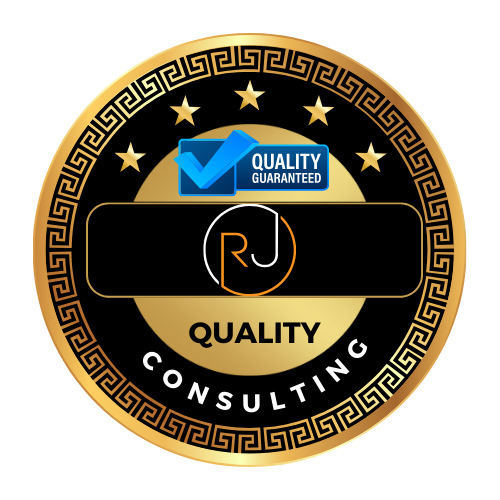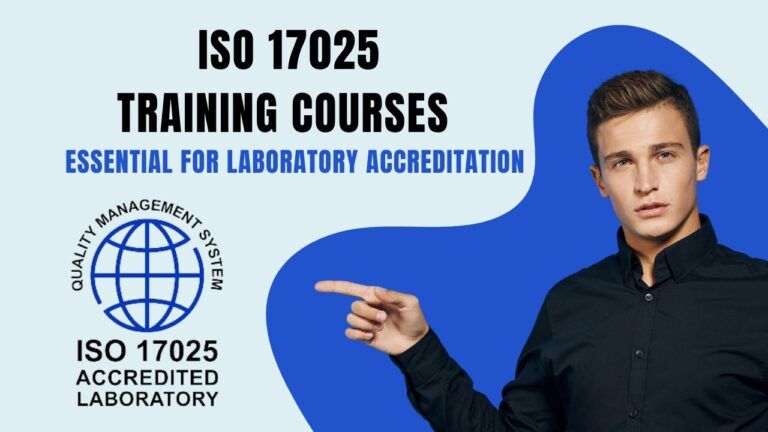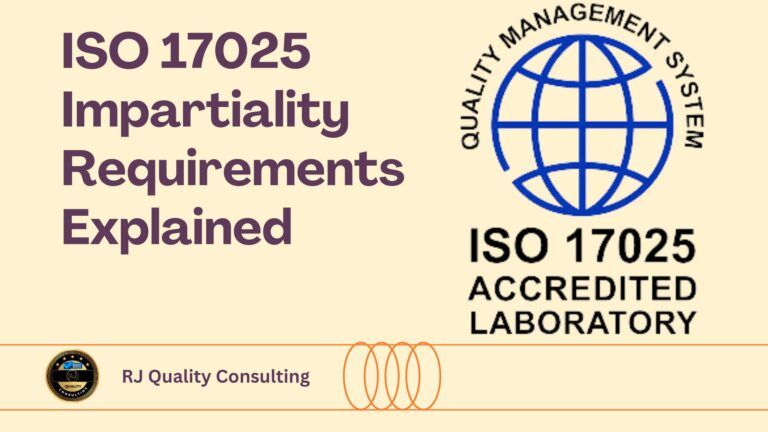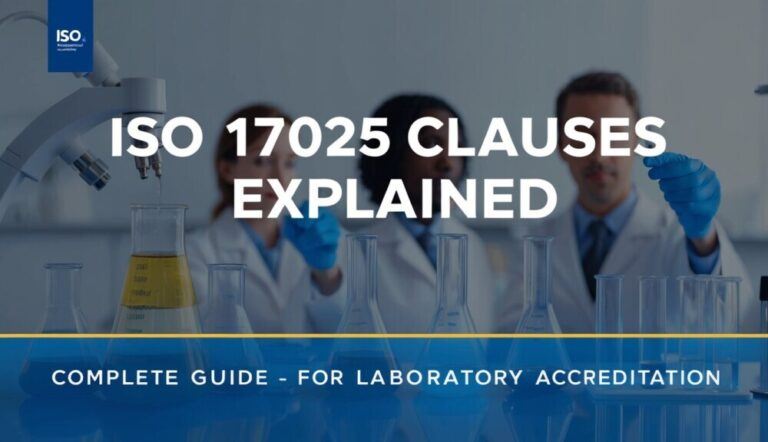ISO 17025 Accreditation: Step-by-Step Guide & Video Walkthrough
Achieving ISO 17025 accreditation is a significant milestone for laboratories aiming to demonstrate technical competence, ensure reliable test results, and meet international standards. This step-by-step guide outlines the ISO 17025 certification process, helping you understand how to get certified, comply with requirements, and pass an audit successfully. If you’re looking to understand the full accreditation process, this guide will walk you through the essential steps with a detailed video walkthrough to help you succeed.
As a certified ISO/IEC 17025 assessor for a major accreditation body, I bring first-hand expertise on what assessors look for during the accreditation process. This guide reflects the best practices and key insights I have gathered through my experience in the field. As you follow this step-by-step guide, you’ll also want a clear picture of ISO 17025 accreditation cost so you know what to budget for each stage.

Why ISO 17025 Accreditation Matters & How to Get Certified
ISO/IEC 17025 Implementation Masterclass
Complete documentation + step-by-step training to get your lab accreditation-ready with confidence.
What you get (features)
- Customizable Quality Manual aligned to ISO/IEC 17025
- All required policies & procedures with matching forms/templates
- 7 training modules (Clauses 4–8, internal audit & management review)
- 20-question quiz + certificate of completion
- Clear instructions on tailoring documents to your lab
Why it matters (benefits)
- Implement faster with proven, audit-ready templates
- Train your team consistently and reduce nonconformities
- Show competence to assessors with documented training & certificate
- Confidently prepare for internal & external audits
- Move from “paper compliance” to a working quality system
ISO 17025 certification is the globally recognized standard for testing and calibration laboratories. It ensures compliance with international quality standards, enhancing the credibility and operational efficiency of your laboratory. Accreditation enhances credibility, operational efficiency, and ensures compliance with regulatory and customer requirements. By achieving accreditation, laboratories can confidently demonstrate that their testing results are valid and repeatable.
My experience as a certified ISO/IEC 17025 assessor allows me to provide insights into how laboratories can best prepare to meet the stringent requirements of accreditation bodies.
Watch the Video Guide on ISO 17025 Accreditation
🎥 In this video, I break down the entire ISO 17025 accreditation process in an easy-to-follow step-by-step format.
📌 Watch Here:
10-Step Process to Achieve ISO 17025 Accreditation & Compliance
1. Understand ISO 17025 Requirements & Certification Process
Before beginning the ISO 17025 certification process, it is essential to understand the fundamental requirements of ISO 17025 accreditation and how laboratories must comply with them. The standard consists of two main categories:
- ISO 17025 Management Requirements – These include quality management system (QMS) implementation, document control, risk management, and continual improvement. The goal is to ensure that the lab follows a structured approach to maintaining quality.
- ISO 17025 Technical Requirements – These focus on personnel competency, the validity of test results, calibration of equipment, environmental conditions, and traceability of measurements.
With my experience assessing laboratories for compliance, I emphasize focusing on both documentation and practical application of these ISO 17025 requirements to ensure a smooth accreditation process.
2. Develop and Implement a Quality Management System (QMS) for ISO 17025 Compliance
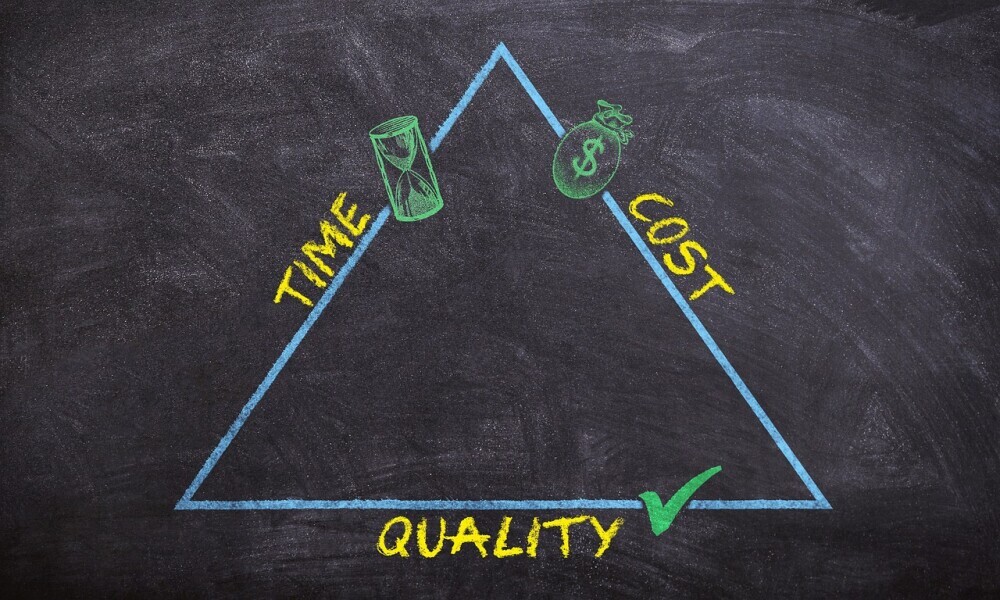
Developing and implementing a Quality Management System (QMS) is the foundation of ISO 17025 accreditation compliance. A structured QMS helps laboratories meet ISO 17025 documentation requirements and prepare for a successful audit. This system should define how your laboratory ensures quality, maintains records, and meets ISO 17025 requirements. A well-structured QMS includes:
- A Quality Manual that outlines the lab’s policies and objectives, including:
- Impartiality Policy
- Confidentiality Policy
- Quality Policy and Quality Objectives
- Standard Operating Procedures (SOPs) that document how tests and calibrations are performed, including:
- Section 6.2.5 – Personnel (Training Procedure)
- Section 6.3.2 – Requirements for facilities and environmental conditions
- Section 6.4.3 – Equipment Procedure and master equipment list
- Section 6.6.2 – Externally provided products and services procedure
- Section 7.1.1 – Review of requests, tenders, and contracts procedure
- Section 7.3.1 – Sampling Plan and method
- Section 7.4.1 – Handling of test or calibration items procedure
- Section 7.7.1 – Ensuring the validity of test results procedure
- Section 7.9.1 – Complaint handling procedure
- Section 7.10.1 – Nonconforming work procedure
- Section 7.2.2.4 – Method validation plan
- Section 8.8.2 – Internal audit plan or procedure
- A Document Control System to ensure consistency in documentation.
- A Nonconformance and Corrective Action System to identify and resolve issues.
- A Training Program to ensure personnel competency and compliance with ISO 17025.
As an ISO 17025 assessor, I have seen firsthand how accreditation bodies assess QMS effectiveness. The best approach is to ensure documentation reflects actual laboratory practices, not just compliance on paper.
3. Conduct an Internal Audit & Gap Analysis for ISO 17025 Certification
Performing an internal audit and gap analysis is crucial in assessing the laboratory’s current state of ISO 17025 compliance. This step ensures that your ISO 17025 internal audit checklist is completed before undergoing the official assessment. This step allows you to:
- Identify areas where your lab does not meet ISO 17025 requirements.
- Address any inconsistencies in documentation or processes.
- Verify that personnel understand and follow the quality system.
Laboratories that conduct thorough audits before accreditation assessments have higher success rates. My experience has shown that self-identifying issues before an external assessment leads to a smoother accreditation process.
4. Address Identified Gaps
Once gaps have been identified through the internal audit, corrective actions should be taken to resolve nonconformities. This may include:
- Updating procedures and documentation to align with ISO 17025.
- Conducting additional training sessions for personnel.
- Ensuring calibration and maintenance of laboratory equipment.
- Improving record-keeping practices to demonstrate traceability and compliance.
5. Develop a Proficiency Testing Plan
Proficiency Testing (PT) is a fundamental requirement of ISO 17025 to validate the lab’s technical competency. Laboratories must:
- Submit a four-year PT plan outlining participation in external proficiency testing programs.
- Provide PT results for the first year as evidence of measurement consistency and accuracy.
- Establish an ongoing system to review PT outcomes and take corrective action when necessary.
6. Conduct a Management Review
A management review ensures that the quality system is effective and continually improving. It should be conducted at least annually and include:
- A review of internal audit results.
- Analysis of nonconformities and corrective actions.
- Discussion of customer feedback and opportunities for improvement.
- Evaluation of the effectiveness of personnel training and proficiency testing.
7. Schedule and Prepare for Your ISO 17025 Accreditation Audit
After completing all the preparatory steps, the laboratory must apply for ISO 17025 accreditation with an official accreditation body. Understanding how to prepare for an ISO 17025 audit will help avoid nonconformities and speed up certification. The process includes:
- Document Review – The accrediting body reviews the laboratory’s quality manual, SOPs, and internal audit reports.
- On-Site Assessment – An auditor evaluates laboratory operations, personnel competency, and compliance with ISO 17025.
- Corrective Actions – If nonconformities are identified, the lab must address them before accreditation is granted.
8. Obtain ISO 17025 Accreditation & Maintain Compliance
Once ISO 17025 accreditation is granted, laboratories must maintain compliance by following ISO 17025 audit requirements and ensuring continual improvement. Maintaining compliance will also help labs avoid common mistakes that can lead to nonconformities.
- Conducting regular surveillance audits to ensure ongoing adherence to ISO 17025.
- Continuously improving processes through corrective actions and management reviews.
- Providing continuous training and participation in proficiency testing.
Conclusion – ISO 17025 Accreditation
Achieving ISO 17025 accreditation is a journey that requires careful planning, structured implementation, and continuous improvement. Whether you’re starting from scratch or refining your existing quality system, following the steps outlined in this guide will help you meet the accreditation requirements successfully.
Laboratories that proactively establish a Quality Management System (QMS), conduct thorough internal audits, and participate in proficiency testing are more likely to achieve accreditation with minimal challenges. Beyond the initial certification, maintaining compliance through ongoing monitoring, internal reviews, and continuous improvements is key to long-term success.
As an ISO/IEC 17025 assessor, I’ve seen the challenges laboratories face during the accreditation process, and I know how to help labs streamline their journey to certification. If you’re looking for expert guidance, I’m here to assist you every step of the way.
Final Thoughts
🚀 Book Your Free Consultation Now 👉 Click here for your FREE 45 Minute Consultation
📌 Watch the Full Video Guide Here
🔗 Read More About ISO 17025 Implementation: How to Implement ISO 17025
🚀 Book Your Free Consultation Now 👉 Click here for your FREE 45 Minute Consultation
🕒 Book Your Free 45-Minute Consultation
Have questions about ISO/IEC 17025 or ISO 9001 implementation or accreditation? Schedule a free 45-minute consultation with me to discuss your Company or laboratory’s needs and how we can achieve compliance together.
Schedule Your Consultation